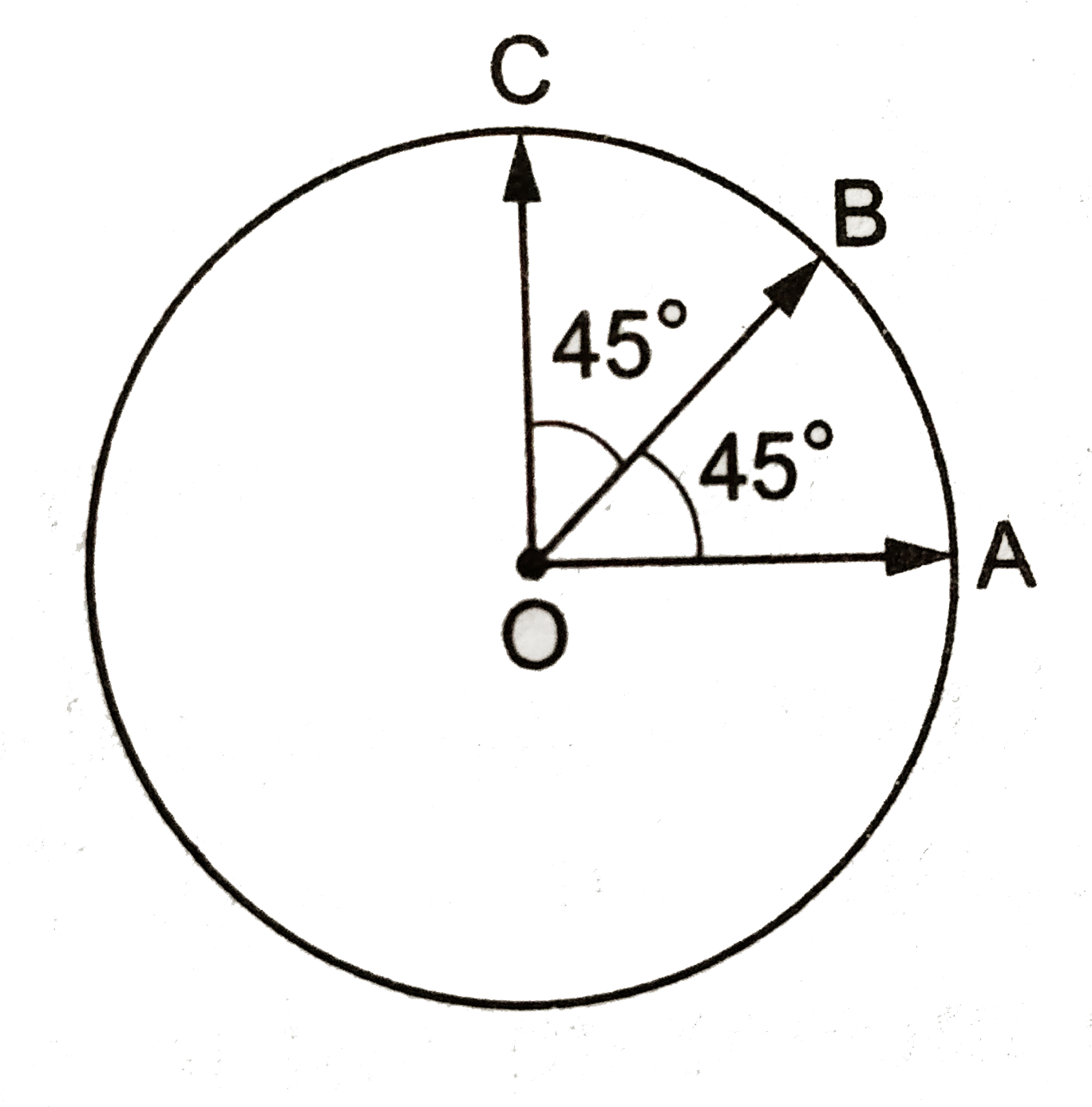The resultant of the three vectors ¯¯¯¯¯¯OA,¯¯¯¯¯¯OB and ¯¯¯¯¯¯OC shown in figure :-

r
2r
r(1+√2)
r(√2−1)
The correct Answer is:C
Step by step video & image solution for The resultant of the three vectors bar(OA),bar(OB) and bar(OC) shown in figure :- by Physics experts to help you in doubts & scoring excellent marks in Class 12 exams.
Updated on:21/07/2023Topper's Solved these Questions
- RACEBook:ALLENChapter:RACEExercise:Basic Maths (Units, Dimensions & Measurements)
Explore 30 Videos
- RACEBook:ALLENChapter:RACEExercise:Basic Maths (KINEMATICS)
Explore 59 Videos
- RACEBook:ALLENChapter:RACEExercise:Basic Maths (Co-ordinate & Algebra)
Explore 37 Videos
- NEWTONS LAWS OF MOTIONBook:ALLENChapter:NEWTONS LAWS OF MOTIONExercise:EXERCISE-III
Explore 28 Videos
- SIMPLE HARMONIC MOTIONBook:ALLENChapter:SIMPLE HARMONIC MOTIONExercise:Example
Explore 1 Video
Similar Questions
Find the resultant of the three vectors −−→OA,−−→OB and −−→OC shown in figure. Radius of the circle is R.

View SolutionFind the resultant of the three vectors −−→OA,−−→OB and −−→OC shown in figure. Radius of the circle is R.

View SolutionFind the resultant of the three vectors −−→OA,−−→OB and −−→OC shown in figure. Radius of the circle is R.

View SolutionFind the resultant of the three vectors shown in figure .
 .
.
View SolutionThe three vectors ¯¯¯¯¯¯OA,¯¯¯¯¯¯OB and ¯¯¯¯¯¯OC have the same magnitude R. Then the sum of these vectors have magnitude.

View SolutionThe magnitude of vectors −−→OA,−−→OBand−−→OC in figure are equal. Find the direction of −−→OA+−−→OB−−−→OC.
 .
.
View SolutionFind the resultant of three vectors shown in the figure.

View SolutionFive vectors, vecX, vecY, vecZ, bar (OB) and bar (AO) are connected as shown in figure. If bar( OB) = bar (AO), then which one of the following option is correct?

View SolutionPoint P is the endpoint of vector OP and point Q is the endpoint of vector OQ. When the vectors ¯¯¯¯¯¯OP and ¯¯¯¯¯¯OQ are added, what is the length of the resultant vector ?

View SolutionThe resultant of vectors −−→OAand−−→OB is perpendicular to −−→OA. Find the angle AOB.

View Solution